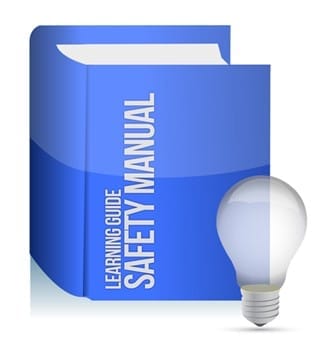 A Safety Culture can be compared to a river which is fed by tributaries large and small, some of which have disappeared over the years. Although the river may look tranquil on the surface, there are many undercurrents moving in different directions, yet still the river moves ever onward. Sometimes there is great turbulence and swift movement, while at other times the water looks almost static.
A Safety Culture can be compared to a river which is fed by tributaries large and small, some of which have disappeared over the years. Although the river may look tranquil on the surface, there are many undercurrents moving in different directions, yet still the river moves ever onward. Sometimes there is great turbulence and swift movement, while at other times the water looks almost static.
To develop and sustain an effective safety culture that will look after the well-being of people we need:
- to see the world through their eyes
- to walk in their footsteps
- to draw on their knowledge, experience and intellect
Information, articles and reports relating to safety culture are abundant, yet there is still very few universally recognized toolkits and respected definition or model.
A safety culture reflects the attitudes, beliefs, perceptions and values that employees share in relation to safety. These attitudes have the power to shape behavior. It's built on an environment that values positive work attitudes, involvement of the workforce, respect for meaningful and measurable health improvement goals, and clear policies and procedures that serve as reference tools.
Employee engagement is a key component of workplace safety … but one of the most difficult components to achieve. You can implement safety policies and procedures, but without full employee engagement, your safety program won’t be able to reach its full potential.
In a safe workplace culture, each employee must accept personal responsibility for ensuring their own safety and health while also taking responsibility for the protection and safety of others. Engaged employees don't just wear the required safety equipment and follows safety procedures - they take responsibility for their actions, help protect other employees and help improve the overall safety procedures. 
How Can You Engage Employees?
What engages employees will differ from organization to organization, but there are some tactics that will apply to all workplaces:
- Commit to safety on all levels – management must buy-in!
- Set a clear safety goal … and reward your team when you meet your goal
- Reduce competing priorities – make safety the most important priority
- Encourage two-way communication and listen to feedback
- Involve employees in policy development
- Provide regular training and information
- Create a safety committee
- Ask for feedback
- Create an easy incident reporting system
- Provide ongoing support, reinforcement and reassessment
Building a culture of safety takes time. But once you reach your goal, you'll notice a huge improvement in your safety programs, with fewer incidents, higher productivity and increased staff morale.
Interested in learning more about building a safety culture? We can help! Call us today for your safety training needs.




